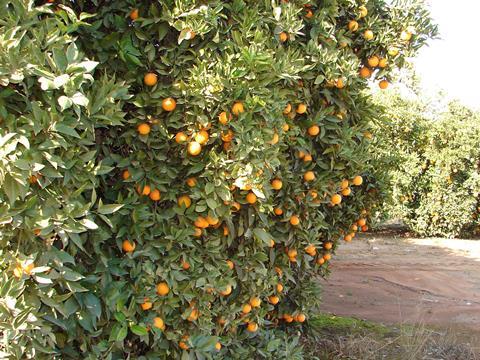Ideal weather conditions produce high-quality, large-sized fruit with CDFA forecasting increased volumes compared to last season
A mild summer combined with some welcome rains look to have set an excellent crop of relatively large-sized, clean-appearing navel oranges for the 2025/26 campaign.

“The fruit in the orchards looks fantastic with lots of large sizes,” noted Steve Holly of Voita International Produce. “There’s relatively little insect damage that I’m seeing so far – certainly nothing like two years ago when we had a massive thrip outbreak.”
“The (weather) conditions this summer couldn’t have been better,” agreed citrus industry veteran Tom Wollenman. “And there is a lighter fruit set (on the trees), which should help in sizing over the course of the season.”
According to the California Department of Food and Agriculture (CDFA), “utilised” volume during the 2025/26 shipping season for navels should reach 80mn cartons (18 kg) compared to the 76.8mn of last year. Fruit diameter was also measuring 6 per cent larger in diameter than in 2024, which may actually present a challenge for the industry later in the season.
“The rains that hit in mid-October will cause the fruit to grow all the more, however,” said Holly. “Right now, the (size) curve is peaking on 88s and 72s with some 113s mixed in. By January, there will be plenty of 56s and 48s with practically no small fruit available. Some of this crop may continue to grow and end up being too large for some markets.”
That may work well for Asia Pacific destinations, however, as many prefer large-diameter fruit. Nevertheless, the international trade scenario remains an uncertain one for California growers.
“Our industry used to be able to count on exporting about a third of its crop every season,” noted Wollenman. “But that business has really been hurting the last many years due to trade wars and other problems beyond anyone’s control. It would really help if China would lift its high tariffs at some point.”
Since 2018, California’s Navel orange exports have fallen to around 20 per cent of total annual shipments largely due to the Trump administration’s aggressive trade policies as well as supply channel disruption from the Covid-19 pandemic.
Canada has traditionally been an important market for the California industry. But as the new season approached, growers had become increasingly concerned over a developing trade war between the US and Canada that had resulted in retaliatory tariffs being implemented. Fortunately, both countries have agreed to rescind their added import duties as of the beginning of September.
The California citrus industry continues to struggle with escalating costs of production that threaten their economic viability. Inflation for key inputs such as fertiliser, water and labour have surged to the point where growers now need significantly higher returns from the marketplace just to break even. Additionally, an outbreak of citrus greening disease (or HLB) remains a threat for the San Joaquin Valley where most of the state’s production is located.
“It now costs over US$4000 per acre to farm citrus in the San Joaquin (Valley), where just a few years ago it was closer to US$3000,” said Wollenman. “This can’t continue!”
This article is featured in the upcoming Asiafruit Magazine. For more citrus coverage subscribe here.



